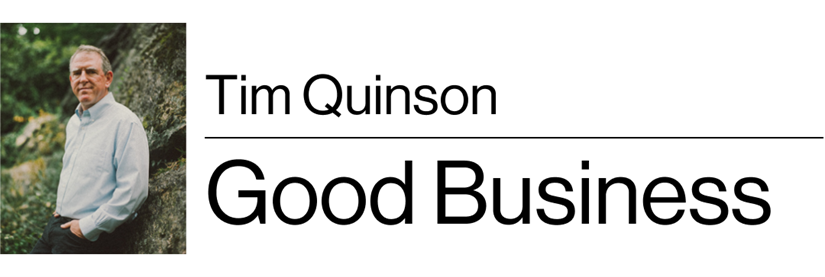Climate news and data-driven insights from Bloomberg’s global newsroom covering the latest in science, environmental impacts, zero-emission tech and green issues.
March 31, 2021
About six weeks ago, millions of homeowners across Texas suddenly found their water to be possibly contaminated—or lost access to it entirely—when freezing temperatures and the state’s decrepit infrastructure led to widespread blackouts.
Last week, on the other side of the planet, Taiwan cut water supplies to areas including a key hub of semiconductor manufacturing, thanks to the worst drought in decades.
These back-to-back crises are emblematic of a global catastrophe that is only now getting the attention it deserves. And unlike other calamities that may recede over time, this one is only going to get worse. The World Health Organization estimates that in less than four years, half of the world’s population will be living in water-stressed areas.
“These risks are only expected to grow as climate change effects intensify,” said Thomas Schumann, the founder of Thomas Schumann Capital, a firm that’s created investable water indexes for the U.S. and Europe. “Not only that, but the business costs associated with these risks are projected to be $300 billion…or five times greater if left unaddressed.”
While most environmental discussions focus on greenhouse-gas emissions, nine of the 10 greatest risks faced by humanity are linked to a lack of water, Schumann said. Water is irreplaceable when it comes to supporting life and well-being. By definition, that means there’s an investor and business case for prioritizing water stewardship, he said.
The events in Texas and Taiwan “directly speak to the impact and to so many stakeholders,” said Jade Huang, a money manager at Calvert Research and Management, which oversees almost $32 billion, including the $494 million Calvert Global Water Fund.
Taiwan Semiconductor Manufacturing Co. needs “extensive amounts of clean water,” Huang said. On March 24, Taiwan issued its first red alert on water supply in six years. While the government restrictions aren’t directed at TSMC, the company said it plans (as a contingency) to increase the amount of water it uses from tanker trucks.
In Texas, the main challenge from the February winter storm was gaining access to clean water for basic health and sanitation, said Yijia Chen, an ESG analyst at Calvert. Valuing water, she said, has never been more important.
Calvert invests in water utilities and distributors; emerging technologies that test, monitor or enhance water quality; companies that focus on improving water efficiency; and companies that provide solutions to global water challenges. One such firm is Danaher Corp., which is a market leader in the water-purification business, Huang said. Another is LG Chem Ltd., which is involved in desalination projects.
Companies can of course continue to operate while spewing massive amounts of carbon into the atmosphere. But without access to water, many would be unable to survive, Schumann said. As a result, investors increasingly use water security as a proxy for climate security, he said.
Thomas Schumann Capital has developed the TSC U.S. Water Security Index, which includes about 550 of the nation’s biggest companies, and the TSC Euro Water Security Index, which is composed of about 225 large-cap stocks from the eurozone.
Companies with lower water footprints and water-risk exposure, such as AT&T Corp., Microsoft Corp. and Citigroup Inc., are given proportionately higher weightings in the indexes, Schumann said. The indexes automatically exclude companies that operate in the gambling, tobacco and defense industries, as well as those with the worst combined ESG and United Nations sustainable development goal ratings.
The TSC U.S. Water Security Net Return Index generated a cumulative return of 116.5% between its creation in October 2015 and last month, compared with the 104% gain of the S&P 500 Index, including reinvested dividends, in the same period. The Calvert Global Water Fund climbed at annual rate of 12.4% in the past five years, trailing the 14.2% gain of its benchmark, the MSCI ACWI Index.
The $1.5 billion Invesco Water Resources ETF is the largest U.S. fund investing in companies that make products to conserve and purify water for homes, businesses and industries. The exchange-traded fund, which tracks the Nasdaq OMX U.S. Water Index, rose at an annual rate of 17.8% in the past five years, beating the 16.3% advance of the S&P 500.
The World Economic Forum identifies transformational investment as the solution to systemic risks such as water crises, Schumann said. These investments can tackle long-term water risks and also generate competitive returns, which he calls “a win-win-win for the environment, society, and investors.”
Bloomberg Green publishes the Good Business newsletter every Wednesday, providing unique insights on climate-conscious investing and the frontiers of sustainability.
AZURA Wave Technology has combined the increasing need and demand for clean energy and security of clean potable water supply. Coastal and offshore sites will benefit from the proven technology that enables AZURA to offer market leading energy efficiency in conversion percentages. AZURA Wave Technology system can be configured to suit the deployment site requirements, energy only, energy and water, or water only. These systems can be seen as either a permanent mount or can easily be redeployed to another site as required. AZURA meets the challenges we see around us by bringing together green energy and innovative engineering.
For more information of the projects investment opportunities Contact: solutions@ehlsolutions.com



